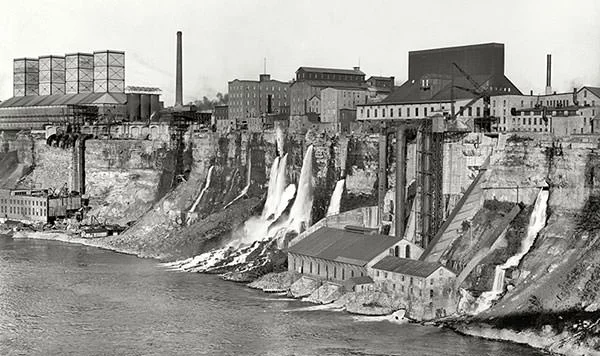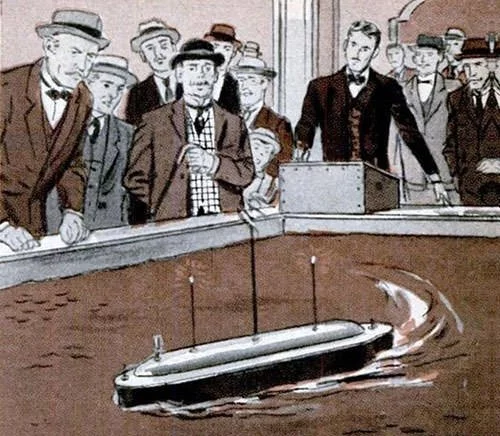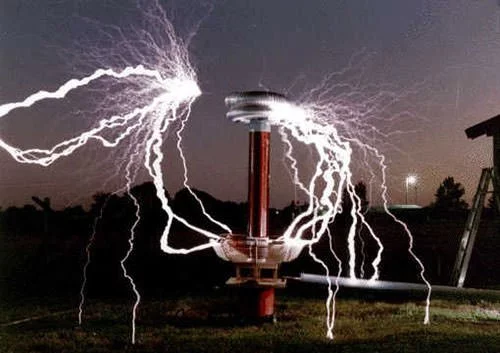
Nikola Tesla, a Serbian-American inventor and engineer, is often regarded as one of the most influential figures in the development of modern electrical systems. His groundbreaking work paved the way for numerous technological advancements that are fundamental to contemporary life. This report outlines Tesla's most significant contributions, emphasizing his innovations in alternating current (AC) systems, induction motors, radio technology, wireless transmission, and renewable energy.
Alternating Current (AC) System

One of Tesla's most remarkable achievements is his development of the alternating current (AC) system, which became the standard for power transmission worldwide. His innovations in this area were crucial in the 'War of Currents,' a fierce competition with Thomas Edison, who championed direct current (DC). Tesla's AC system allowed electricity to be transmitted over long distances more efficiently than DC. This capability was demonstrated dramatically in 1893 when the Westinghouse Electric Company used Tesla's technology to light the World’s Columbian Exposition in Chicago, effectively showcasing the safety and efficiency of AC power systems to the public[2][4][8].
Induction Motor

Tesla invented the induction motor, a significant development that utilizes AC to produce mechanical energy. His design worked using a rotating magnetic field without the need for a commutator or brushes, which had been necessary in previous designs. This innovation not only made the motor more efficient but also allowed for greater versatility in its applications, helping to revolutionize industries. The AC induction motor is still widely used today, particularly in appliances and manufacturing systems, accounting for a substantial portion of global energy consumption[5][11].
Wireless Transmission and Radio Communication

Beyond electric power, Tesla made significant strides in wireless technology. He conducted early experiments with radio frequency oscillations and envisioned a system capable of wireless communication. In 1898, at an electrical exhibition, he successfully demonstrated a remote-controlled boat using radio waves, which was one of the first applications of wireless control[4][10]. Although he faced challenges that hindered his progress, such as the destruction of his laboratory by fire[12], Tesla's foundational work contributed significantly to the eventual development of radio technology. His patents were upheld posthumously, recognizing his contributions to the field of wireless communication[9][10].
Tesla Coil and Wireless Energy Transmission

The Tesla Coil, invented in 1891, is another of Tesla's infamous inventions, characterized by its ability to produce high-voltage and low-current electricity. This device was integral in experiments related to wireless transmission of energy. Tesla had ambitious plans for wireless electricity, which he believed could power homes and industries without the need for wires[5][12]. Although his grand ideas for a global wireless power network were never fully realized, the principles he developed still influence modern technologies like radio and television.
Contributions to Renewable Energy

Tesla's vision extended to the harnessing of renewable energy, particularly through hydroelectric power. He played a pivotal role in developing one of the first hydroelectric plants at Niagara Falls, which began operations in 1896 and set a precedent for using natural energy resources. This project underscored the potential of hydroelectric power in modern environmental policies and technology development[1][4]. Tesla's efforts not only demonstrated the feasibility of large-scale power generation but also highlighted the importance of sustainable energy solutions, a focus that remains vital today.
Impact on Modern Technology

Tesla's broad range of inventions laid the groundwork for many modern technologies. His ideas contributed to advancements in not only electrical engineering but also fields such as robotics, artificial intelligence, and wireless communications. His work continues to resonate in various technological domains, inspiring contemporary scientists and engineers to innovate further[1][6]. Notably, Tesla's legacy influences the automotive industry today, with companies like Tesla Inc. named in his honor, reinforcing his enduring impact on technology and society[2][7].
Conclusion
In summary, Nikola Tesla's contributions to modern technology are profound and multifaceted. From the establishment of the AC power system to pioneering wireless communication and renewable energy, Tesla's innovations are deeply embedded in the fabric of contemporary life. His visionary ideas and relentless pursuit of knowledge continue to inspire innovation across multiple fields, ensuring that his legacy endures well into the future.
Get more accurate answers with Super Pandi, upload files, personalized discovery feed, save searches and contribute to the PandiPedia.
Let's look at alternatives:
- Modify the query.
- Start a new thread.
- Remove sources (if manually added).